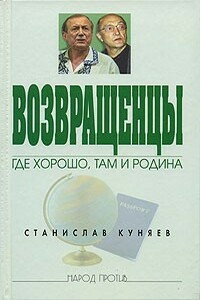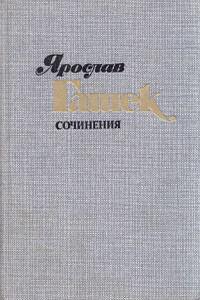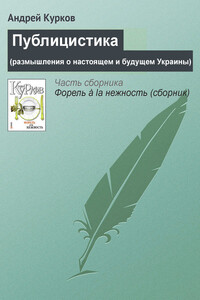Хочу жить на Западе! О мифах и рифах заграничной жизни - [127]
A «Secondary Section» is a named appendix or a front-matter section of the Document that deals exclusively with the relationship of the publishers or authors of the Document to the Document's overall subject (or to related matters) and contains nothing that could fall directly within that overall subject. (Thus, if the Document is in part a textbook of mathematics, a Secondary Section may not explain any mathematics.) The relationship could be a matter of historical connection with the subject or with related matters, or of legal, commercial, philosophical, ethical or political position regarding them.
The «Invariant Sections» are certain Secondary Sections whose titles are designated, as being those of Invariant Sections, in the notice that says that the Document is released under this License. If a section does not fit the above definition of Secondary then it is not allowed to be designated as Invariant. The Document may contain zero Invariant Sections. If the Document does not identify any Invariant Sections then there are none.
The «Cover Texts» are certain short passages of text that are listed, as Front-Cover Texts or Back-Cover Texts, in the notice that says that the Document is released under this License. A Front-Cover Text may be at most 5 words, and a Back-Cover Text may be at most 25 words.
A «Transparent» copy of the Document means a machine-readable copy, represented in a format whose specification is available to the general public, that is suitable for revising the document straightforwardly with generic text editors or (for images composed of pixels) generic paint programs or (for drawings) some widely available drawing editor, and that is suitable for input to text formatters or for automatic translation to a variety of formats suitable for input to text formatters. A copy made in an otherwise Transparent file format whose markup, or absence of markup, has been arranged to thwart or discourage subsequent modification by readers is not Transparent. An image format is not Transparent if used for any substantial amount of text. A copy that is not «Transparent» is called «Opaque».
Examples of suitable formats for Transparent copies include plain ASCII without markup, Texinfo input format, LaTeX input format, SGML or XML using a publicly available DTD, and standard-conforming simple HTML, PostScript or PDF designed for human modification. Examples of transparent image formats include PNG, XCF and JPG. Opaque formats include proprietary formats that can be read and edited only by proprietary word processors, SGML or XML for which the DTD and/or processing tools are not generally available, and the machine-generated HTML, PostScript or PDF produced by some word processors for output purposes only.
The «Title Page» means, for a printed book, the title page itself, plus such following pages as are needed to hold, legibly, the material this License requires to appear in the title page. For works in formats which do not have any title page as such, «Title Page» means the text near the most prominent appearance of the work's title, preceding the beginning of the body of the text.
The «publisher» means any person or entity that distributes copies of the Document to the public.
A section «Entitled XYZ» means a named subunit of the Document whose title either is precisely XYZ or contains XYZ in parentheses following text that translates XYZ in another language. (Here XYZ stands for a specific section name mentioned below, such as «Acknowledgements», «Dedications», «Endorsements», or «History».) To «Preserve the Title» of such a section when you modify the Document means that it remains a section «Entitled XYZ» according to this definition.
The Document may include Warranty Disclaimers next to the notice which states that this License applies to the Document. These Warranty Disclaimers are considered to be included by reference in this License, but only as regards disclaiming warranties: any other implication that these Warranty Disclaimers may have is void and has no effect on the meaning of this License.
2. VERBATIM COPYING
You may copy and distribute the Document in any medium, either commercially or noncommercially, provided that this License, the copyright notices, and the license notice saying this License applies to the Document are reproduced in all copies, and that you add no other conditions whatsoever to those of this License. You may not use technical measures to obstruct or control the reading or further copying of the copies you make or distribute. However, you may accept compensation in exchange for copies. If you distribute a large enough number of copies you must also follow the conditions in section 3.
You may also lend copies, under the same conditions stated above, and you may publicly display copies.
3. COPYING IN QUANTITY
If you publish printed copies (or copies in media that commonly have printed covers) of the Document, numbering more than 100, and the Document's license notice requires Cover Texts, you must enclose the copies in covers that carry, clearly and legibly, all these Cover Texts: Front-Cover Texts on the front cover, and Back-Cover Texts on the back cover. Both covers must also clearly and legibly identify you as the publisher of these copies. The front cover must present the full title with all words of the title equally prominent and visible. You may add other material on the covers in addition. Copying with changes limited to the covers, as long as they preserve the title of the Document and satisfy these conditions, can be treated as verbatim copying in other respects.

В книге рассказывается история главного героя, который сталкивается с различными проблемами и препятствиями на протяжении всего своего путешествия. По пути он встречает множество второстепенных персонажей, которые играют важные роли в истории. Благодаря опыту главного героя книга исследует такие темы, как любовь, потеря, надежда и стойкость. По мере того, как главный герой преодолевает свои трудности, он усваивает ценные уроки жизни и растет как личность.

В этой работе мы познакомим читателя с рядом поучительных приемов разведки в прошлом, особенно с современными приемами иностранных разведок и их троцкистско-бухаринской агентуры.Об автореЛеонид Михайлович Заковский (настоящее имя Генрих Эрнестович Штубис, латыш. Henriks Štubis, 1894 — 29 августа 1938) — деятель советских органов госбезопасности, комиссар государственной безопасности 1 ранга.В марте 1938 года был снят с поста начальника Московского управления НКВД и назначен начальником треста Камлесосплав.

В книге рассказывается история главного героя, который сталкивается с различными проблемами и препятствиями на протяжении всего своего путешествия. По пути он встречает множество второстепенных персонажей, которые играют важные роли в истории. Благодаря опыту главного героя книга исследует такие темы, как любовь, потеря, надежда и стойкость. По мере того, как главный герой преодолевает свои трудности, он усваивает ценные уроки жизни и растет как личность.

Как в конце XX века мог рухнуть великий Советский Союз, до сих пор, спустя полтора десятка лет, не укладывается в головах ни ярых русофобов, ни патриотов. Но предчувствия, что стране грозит катастрофа, появились еще в 60–70-е годы. Уже тогда разгорались нешуточные баталии прежде всего в литературной среде – между многочисленными либералами, в основном евреями, и горсткой государственников. На гребне той борьбы были наши замечательные писатели, художники, ученые, артисты. Многих из них уже нет, но и сейчас в строю Михаил Лобанов, Юрий Бондарев, Михаил Алексеев, Василий Белов, Валентин Распутин, Сергей Семанов… В этом ряду поэт и публицист Станислав Куняев.

Статья посвящена положению словаков в Австро-Венгерской империи, и расстрелу в октябре 1907 года, жандармами, местных жителей в словацком селении Чернова близ Ружомберока…
